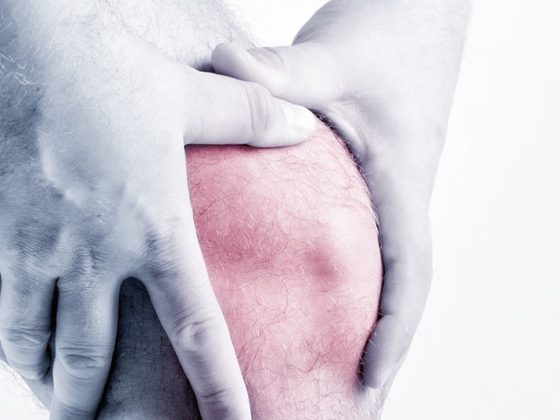A teenager presents to the hospital with urticaria, periodic fever, and suspected arthritis as well as myositis and myocarditis. In the search for the appropriate therapy, his condition initially worsens.
The 15-year-old adolescent developed urticaria since October 2017 and evening fever and loss of appetite since New Year’s Eve of the same year. In the course, there was a weight loss of 6 kg, the boy developed aching limbs and suffered from massive problems falling asleep. Short-term, there was bilateral swelling of the PIP and DIP joints of the 2nd and 5th fingers, with improvement after one day in each case. Then swelling of the right knee joint occurred for 10 days. The teen’s adolescent doctor ordered a blood test, which showed a leukocytosis of 24,900 with neutrophilia. ESR at 80 mm and CRP at 190 mg/l were highly elevated, as was LDH at 675 U/l. Clinical referral was then made on Jan. 12, 2018.
As Dr. Dressler and his colleagues learned, the boy had already developed urticaria with subfebrile temperatures and short-term joint swelling in the winter of the previous year. Improvement occurred within two weeks at that time. The young patient was born in South Africa to an HIV-positive mother and adopted to Germany as an infant. During a 2016 visit to the country of his birth, he was not in a malaria-endemic area. There were no significant pre-existing conditions and he was an active soccer player.
At the time of hospitalization, the adolescent was in barely reduced general condition. He had mild urticaria on the left forearm and hand, and then on the legs as it progressed. The knee circumference was increased by 1 cm on the right side, the fingers and all other joints were freely movable. The remaining findings were also unremarkable. X-ray in two planes of the right knee revealed the effusion, but the bony findings remained unremarkable. Sonographically, effusion was found in the suprapatellar recess up to 12 mm with vigorous synovial proliferation (laboratory: CRP 127 mg/l, procalcitonin normal at 0.3 µg/l, GOT elevated at 100, GPT elevated at 73, and LDH elevated at 603 U/l, CK significantly elevated at 697 U/l and troponin elevated at 617 ng/l, ANA 1:1280, DNA and ENA-Ak negative, IgG elevated at 19.5 g/l).
Anakinra therapy initially worsened the situation
The physicians ordered a puncture of the right knee to rule out septic arthritis, which showed 19,200 leukocytes in the synovial fluid and 93% neutrophils; cultures remained sterile. Myositis with myocarditis was suspected, but echocardiography and cardio-MRI and ocular findings were unremarkable. A sonography of the abdomen showed marked hepatomegaly. The initiated antibiotic therapy did not improve the fever, and the serum calprotectin was strongly elevated at 78 800 ng/ml. Suspecting systemic juvenile idiopathic arthritis, the physicians then decided to treat the patient with anakinra (which has not yet been approved in Switzerland), but this caused the CRP to rise to 298 mg/l increased, AZ deteriorated, creatinine increased to 251 µmol/l, the patient had to be transferred to the intensive care unit with circulatory instability.
Bone marrow aspiration and PET-CT remained without landmark findings. Suspecting incomplete macrophage activation syndrome, therapy with methylprednisolone pulses followed by oral prednisolone was initiated and anakinra administration was continued. This was followed by the onset of fever and a slow improvement in AZ and laboratory values.
The five-week inpatient stay was followed by a switch in therapy from anakinra to canakinumab in an outpatient setting, and prednisolone was phased out until discontinuation in May 2018, with no recurrence of fever, exanthema, or arthritis. By December 2018, liver enzymes normalized, ANA slowly dropped to most recently 1:160, serum calprotectin also normalized. Pathologically, troponin remains at last 44 ng/l with continued normal echocardiography. The teenager can play football in the club again. The plan now is to discontinue canakinumab.
Ultimately, the case was an unusual systemic juvenile arthritis with myositis and high ANA that had a delayed response to interleukin-1 blockade with the addition of systemic steroids. In the meantime, the condition deteriorated with circulatory weakness, massive transaminases and significant creatinine increases. Complete clinical recovery was achieved under interleukin-1 blockade.
Source: 47th Congress of the German Society for Rheumatology (DGRh), Dresden (D)
InFo PAIN & GERIATRY 2019; 1(1): 32 (published 11/23/19, ahead of print).











